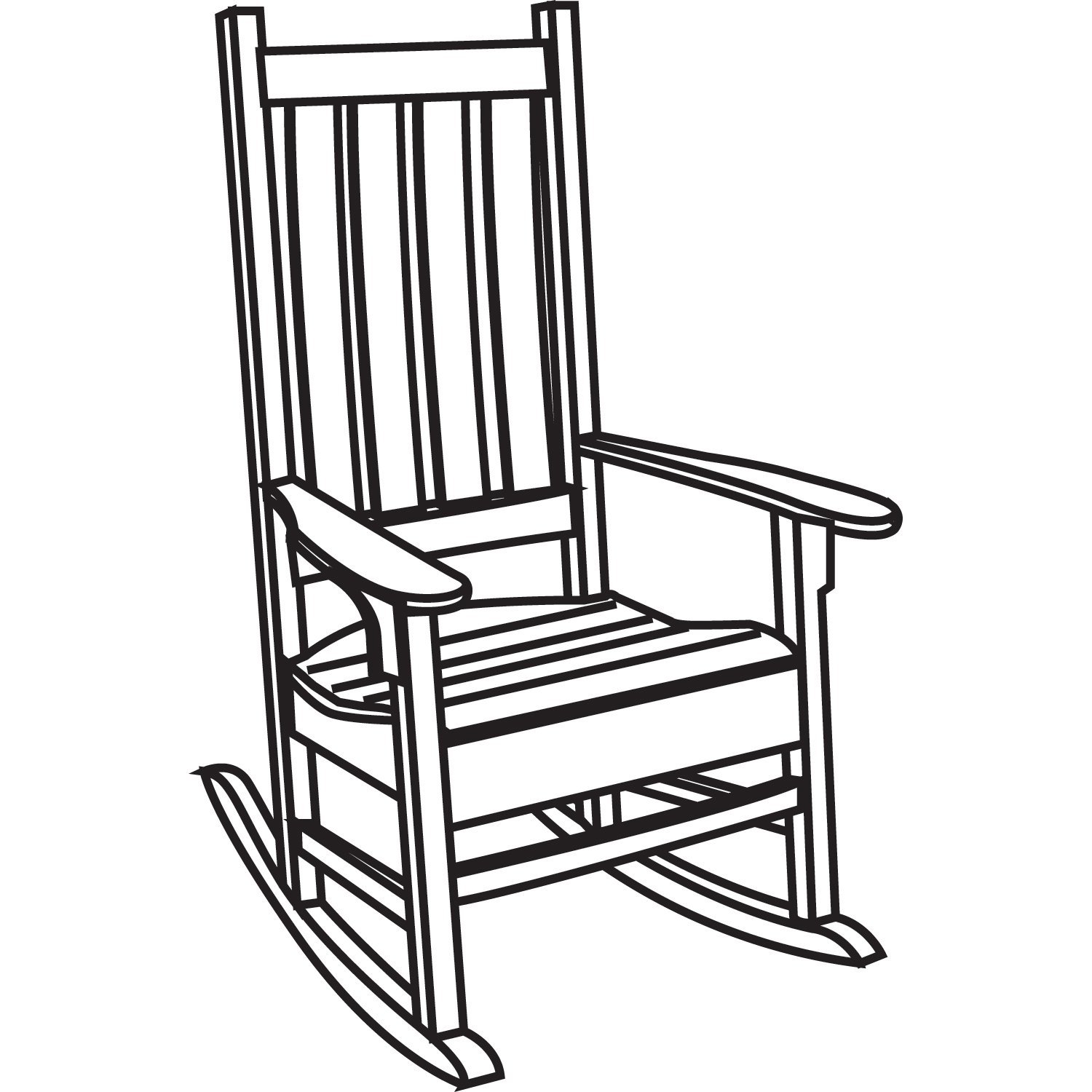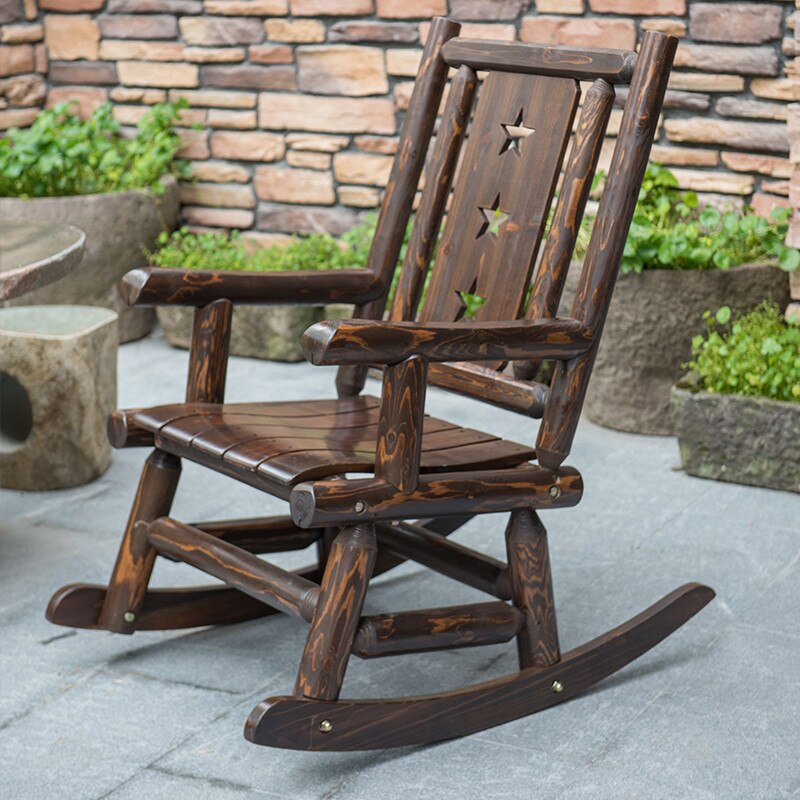History and Evolution of the Vintage Black Rocking Chair

The vintage black rocking chair, a timeless piece of furniture, embodies a rich history and cultural significance. Its evolution, from humble beginnings to a symbol of comfort and tradition, reflects the changing tastes and needs of society.
Origins of the Rocking Chair
Rocking chairs have a long and fascinating history, with their origins traced back to the 18th century. Early rocking chairs were often simple and utilitarian, crafted from wood and featuring a basic design. While the exact origin of the rocking chair is debated, evidence suggests that rocking chairs were first developed in the American colonies. The rocking motion, mimicking the gentle sway of a cradle, provided a soothing and comforting experience.
Early Black Rocking Chairs, Vintage black rocking chair
Black rocking chairs, particularly those made from black walnut or ebony, emerged as a symbol of elegance and sophistication in the 19th century. These chairs were often handcrafted by skilled artisans and featured intricate carvings, polished finishes, and ornate details. The use of black wood, with its rich and luxurious appearance, added a touch of grandeur to homes and reflected the growing appreciation for fine craftsmanship.
Black Rocking Chairs in Different Cultures
Rocking chairs have held a special place in various cultures throughout history. In the United States, rocking chairs became synonymous with Southern hospitality and leisurely living. They were commonly found on porches, verandas, and in living rooms, providing a comfortable spot for relaxation and conversation. In Europe, rocking chairs were less common, but they gained popularity in the late 19th and early 20th centuries, particularly in Scandinavian countries, where they were often incorporated into minimalist and functional interiors.
Iconic Vintage Black Rocking Chairs
The history of black rocking chairs is marked by the creation of several iconic designs that have stood the test of time.
- The Windsor Rocking Chair: Originating in England in the 18th century, the Windsor rocking chair is known for its simple yet elegant design, featuring a solid wooden seat and back supported by spindles. Black Windsor rocking chairs, with their dark wood and traditional style, remain popular today, evoking a sense of history and craftsmanship.
- The Ladder-Back Rocking Chair: This type of rocking chair, popular in the 19th century, features a tall, ladder-like back, providing both support and visual interest. Black ladder-back rocking chairs were often made from oak or maple and were frequently adorned with decorative carvings or turned legs.
- The Arts and Crafts Rocking Chair: During the Arts and Crafts movement in the late 19th and early 20th centuries, a focus on natural materials and handcrafted designs led to the creation of rocking chairs with simple lines, sturdy construction, and a focus on functionality. Black Arts and Crafts rocking chairs often featured exposed wood joints, hand-stitched upholstery, and a rustic aesthetic.
Design Innovations in Black Rocking Chairs
Over time, the design of black rocking chairs has evolved, incorporating new materials and techniques.
- Metal Rocking Chairs: In the mid-20th century, metal rocking chairs became popular, offering durability and a modern aesthetic. Black metal rocking chairs, often featuring tubular steel frames and sleek designs, became a staple in mid-century modern homes.
- Plastic Rocking Chairs: The development of plastic in the latter half of the 20th century led to the creation of lightweight and affordable rocking chairs. Black plastic rocking chairs, with their versatility and ease of maintenance, became popular for both indoor and outdoor use.
- Ergonomic Designs: In recent years, the focus on comfort and functionality has led to the development of ergonomic rocking chairs. These chairs are designed to provide optimal support and minimize strain on the body, incorporating features such as adjustable backrests, lumbar support, and contoured seats.
Design and Aesthetics of Vintage Black Rocking Chairs

Vintage black rocking chairs are more than just functional furniture; they are embodiments of style, craftsmanship, and the evolution of design. Their distinctive features and construction techniques reflect the aesthetic sensibilities and technological advancements of their respective eras.
Materials and Construction
The materials and construction techniques employed in vintage black rocking chairs vary depending on the period and style.
- Early rocking chairs, often dating back to the 18th century, were typically crafted from hardwoods like oak, cherry, or walnut. These woods were known for their durability and ability to withstand the stresses of rocking motion.
- Later rocking chairs, particularly those from the Victorian era, often incorporated softer woods like maple or pine, which allowed for more intricate carvings and embellishments.
- Black finishes were often achieved using a combination of stains, varnishes, and shellacs. These finishes not only enhanced the natural beauty of the wood but also provided protection against wear and tear.
Shapes and Styles
The shapes and styles of vintage black rocking chairs are equally diverse, reflecting the evolving trends in furniture design.
- Early rocking chairs often featured simple, functional designs with straight backs and arms.
- Rocking chairs from the Victorian era, however, were characterized by their ornate details, including elaborate carvings, scrollwork, and padded seats.
- Art Nouveau rocking chairs, popular in the early 20th century, emphasized flowing lines and organic forms, often incorporating floral motifs and abstract patterns.
- Mid-century modern rocking chairs, designed in the 1950s and 1960s, embraced minimalist aesthetics, featuring clean lines, geometric shapes, and a focus on functionality.
Ornamentation
Ornamentation played a significant role in enhancing the aesthetic appeal of vintage black rocking chairs.
- Early rocking chairs often featured simple, functional designs with straight backs and arms.
- Rocking chairs from the Victorian era, however, were characterized by their ornate details, including elaborate carvings, scrollwork, and padded seats.
- Art Nouveau rocking chairs, popular in the early 20th century, emphasized flowing lines and organic forms, often incorporating floral motifs and abstract patterns.
- Mid-century modern rocking chairs, designed in the 1950s and 1960s, embraced minimalist aesthetics, featuring clean lines, geometric shapes, and a focus on functionality.
Examples of Design Movements
- The Windsor chair, a classic rocking chair design, originated in England during the 18th century. It is characterized by its simple construction, with a curved back and a spindle-shaped seat.
- The rocking chair, a classic rocking chair design, originated in England during the 18th century. It is characterized by its simple construction, with a curved back and a spindle-shaped seat.
Vintage Black Rocking Chairs in Popular Culture and Art

The vintage black rocking chair has transcended its functional purpose to become a powerful symbol in popular culture and art, embodying themes of comfort, nostalgia, and the passage of time. Its presence in literature, film, music, and visual arts reflects its enduring appeal and its ability to evoke a range of emotions and memories.
Vintage Black Rocking Chairs in Literature
The vintage black rocking chair’s appearance in literature often signifies a sense of home, tradition, and the weight of history. It serves as a focal point for reflection, storytelling, and the contemplation of life’s complexities.
- In Harper Lee’s To Kill a Mockingbird, Atticus Finch sits in a rocking chair on the porch of his home, symbolizing his wisdom, strength, and unwavering moral compass. The rocking chair becomes a place of comfort and refuge for Scout, Jem, and Dill as they listen to Atticus’s stories and learn about the world.
- In Ernest Hemingway’s The Old Man and the Sea, Santiago’s weathered rocking chair embodies his resilience, his connection to the sea, and his enduring spirit. It serves as a reminder of his past triumphs and his unwavering determination.
Vintage Black Rocking Chairs in Film
Vintage black rocking chairs often appear in film as props that contribute to the setting, atmosphere, and character development. They can symbolize comfort, nostalgia, and the passage of time, as well as convey a sense of solitude, reflection, and introspection.
- In the film The Shawshank Redemption, Andy Dufresne’s rocking chair on the prison yard represents his hope for freedom and his determination to maintain his sanity amidst the harsh realities of prison life. The rocking chair becomes a symbol of his enduring spirit and his ability to find solace in the face of adversity.
- In the film The Godfather, Don Vito Corleone’s rocking chair in his office symbolizes his power, his wisdom, and his ability to command respect and loyalty. The rocking chair becomes a symbol of his authority and his control over his family and his business.
Vintage Black Rocking Chairs in Music
The vintage black rocking chair’s presence in music often evokes a sense of nostalgia, comfort, and the passage of time. It can be used to create a mood of reflection, reminiscence, and the contemplation of life’s journey.
“I’m sitting here on the porch, watching the sunset,
In my old rocking chair, thinking about the past.”
This excerpt from a song about the passage of time uses the rocking chair as a symbol of reflection and contemplation.
Vintage Black Rocking Chairs in Visual Arts
The vintage black rocking chair has been a popular subject in paintings, photographs, and other forms of visual art. Artists often use the rocking chair to convey a sense of home, comfort, and nostalgia, as well as to explore themes of solitude, reflection, and the passage of time.
- The painting “The Rocking Chair” by Andrew Wyeth depicts a lone rocking chair on a porch, symbolizing the passage of time and the inevitability of change. The painting evokes a sense of solitude, reflection, and the contemplation of life’s journey.
- The photograph “The Rocking Chair” by Ansel Adams captures the simplicity and beauty of a rocking chair on a porch, emphasizing its timeless appeal and its ability to evoke a sense of peace and tranquility.
A vintage black rocking chair can be a cool addition to any room, but if you’re looking for something to chill out in while soaking up the sun, a rocker recliner lawn chair is the way to go. It’s like having a vintage rocking chair, but with the added bonus of being able to recline and relax outdoors.
Plus, you can find them in a ton of colors and styles, so you can find one that perfectly matches your vibe.
That vintage black rocking chair in your grandma’s living room is a classic, but let’s be real, it’s probably not the most comfortable. You can give it a modern update with some jcpenney rocking chair pads that add a touch of style and make it super cozy for those long reading sessions.
